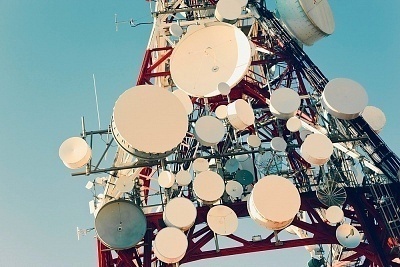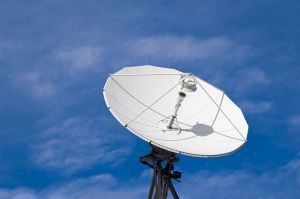While millions of people watch television each day, many of them are not quite sure how the technology works. Television has been around for many decades and although some of its components have changed over the years, the way in which television broadcasts work is pretty much the same.
Elements of Broadcast Television
There are a several major parts that are required in order to receive television broadcasts. They include an image source, a sound source, a transmitter, a receiver, a display device, and a sound device.
Image Source
The image source can be defined as the program. It can be a movie, TV show, news program, etc. The image source is just the source’s video and does not include the sound. The image source is usually recorded on camera or flying spot scanner.
Sound Source
Once the image source is obtained, for e.g. a video of a movie, sound is needed to complete the medium. The sound source is the TV program’s audio signal, whether coming from a movie, TV show, news program, etc. It can come in the form of mono, stereo, or even digitally processed surround sound.
Transmitter
A transmitter is what sends both audio and video signals over the air waves. Transmitters usually transmit more than one signal (TV channel) at a time. A transmitter modulates both picture and sound into one signal then sends this transmission over a wide range for a receiver (TV set) to receive.
Receiver
A receiver (TV set) receives the transmitted signals (TV programs) and turns radio waves, which include audio and video signals, into useful signals that can be processed into an image and sound.
Display Device
This is either a TV set or monitor. A display device has the technology to turn the electrical signals received into visible light. On a standard TV set, this includes the CRT (Cathode Ray Tube) technology.
Sound Device
The sound devices are usually speakers that are either built into the TV set or that accompany the TV set and turn electrical signals into sound waves to play audio along with the video images.
Broadcast Television Signals
Broadcast Television Signals are video and sound signals that are transmitted over the air. Anyone using a television set that has a receiver and an antenna can pick them up for free. Antennas are used to grab as much signal as possible and to sometimes amplify the signal.
All TV sets have the ability to switch the receiver’s tuner to pick up specific channels. Each channel is transmitted on its own frequency, which the TV set can tune into and receive.
Broadcast TV vs. Satellite TV and Cable TV
There are three main ways to receive TV programming, one is through broadcast television and the other two are through satellite and cable TV.
Broadcast TV
Broadcast TV is when audio and video signals are transmitted over the air waves from a ground based transmitter. These signals are usually picked up for free and are on specific frequency spectra.
Satellite TV
Satellite TV is usually a digital TV signal that is broadcast from a satellite orbiting the earth. They are usually pay services that require special equipment to receive programming and operate on special frequencies.
Cable TV
Cable TV is a pay TV service that sends out signals not over the air, but through cable that runs from the cable company to the viewer’s home. Many cable types, from copper to fiber optic cables, are used. The signal can be analog or digital.
Television Transmission Bands
Television is transmitted on various bands or frequencies. Transmission bands vary by country. In America, bands III to V are used, which include VHF and UHF signals.
Band I
It is important to note that lower band signals such as bands I do not have enough bandwidth, which means they cannot carry much information.
Band II
Band II in America is what carries FM radio. While this band is able to carry an audio signal, adding video to the signal would overcrowd it and it would be inferior to the signal that viewers receive today.
Bands III , IV, and V
A Normal TV signal is located on Band III, IV, or V. Usually, these bands require bandwidth to carry both audio and video signals. Most TV signals have about 4MHz of bandwidth for the video portion, when the signal’s sound portion is added the signal will have a total of about 6 MHz. The FCC has allocated each TV channel to a bandwidth of 6 MHz. The channels are as followed:
- Band III – Channels 2 to 6 (54 to 88 MHz)
- Band IV – Channels 7 to 13 (174-216 MHz)
- Band V – Channels 14 to 83 (470 to 890 MHz)
VHF and UHF
VHFs (very high frequencies) are channels that usually include channels 2 to 13. UHFs (ultra high frequencies) are channels that usually include channels 14 to 83.
Both VHF and UHF are great frequencies for carrying TV signals (both audio and video). They have a long range and can penetrate structures such as walls.
Higher Bands
These bands are much higher in frequency and behave like light waves instead of radio waves. Structures usually obstruct these bands and they need a clear line of sight. Many satellite signals can use these frequencies, but require special equipment.
NTSC
All standard television signals that are transmitted in the United States follow NTSC regulations. NTSC (National Television Standards Committee) states that the video signal must have a video line resolution of 525 lines with a 3.58 MHz chroma carrier (color TV signal) and must cycle at 60 cycles per second. It also states that frames are to be displayed at 30 frames per second. NTSC standards make it easy for all TV sets to pick up the same signals that broadcast companies transmit. It is important to note that this standard is for analog television only.




gmvoeth
But, this does not tell you who creates the material to be read over the air by the various reporters.
kakooza georgewilliam
My intentions are all about knowing how pictures reach my TV at home.
lahiru abeysekara
i would like to know, what softwares are used to align the programs in a tv broadcasting cooperation.
Lahiru Abeysekara
This is a very good set of information for the people who would need an initiative info. about tv broadcasting
chard
what is the importance television broadcsting
neeti
is television a broadcasting?if yes then how and if no then why?how it works?
Frank
What is the process for broadcasting live a sporting event? How do the cameras commentators and technical people/equipment interface to produce a feed to cable, sat, or airwaves? Do the distributors have a way of injecting data on the game into the end tv feed or is it totally controlled at the originating source by their technicians and data base ? e.g. posting a hitter’s batting average on the live video feed.
yogesh kr. tank
the ob(open braodcasting) van and dsng (digital sattellite news gathering) van are the remote source or vehicle in which all kind of important equipments such like encoder decoder vision mixer computer graphic machines parabolic dish antenna’s camera’s are kept and whenever it is required at stadiums or any other live event they are used in recording and broadcasting of that programming……..
Raquel
i work at a local tv station and we air tv programs that are sent to us on dvd. We use Harris infocaster to broadcast the programs. What is the best way to prepare the video for airing. Currently, we rip the dvd with Magic DVD Ripper, Convert it to MPG2 format with Any Video Converter and transport into the Infocaster for airing. We have been having some challenges. Videos skip and freeze sometimes, some of them black out. This is not very often but when would prefer it not happen at all. Are we missing something?
Raman Pathak
Dear Raquel!
My name is raman from nepal. Actually i want to suggest you to use adobe premiere for the video transmission and the another fact that you are compressing the video quality use .avi file format for the unlink video.
Thank you
istiak
Dear Bro Raquel and Raman Pathak,
I am very interested to know of TV broadcasting system and TV channel equipment management. i have searched Google many times, but could not found much of information.
from your post here, i come to believe, you have higher knowledge of it.
please give me your email address, so i can email you and ask some question, if you dont mind.
My email: Mishu38 ]at{ gmail.com
Thanks!!
kwiin
..thanks
now i understand more
about my topic in thesis.. 😉